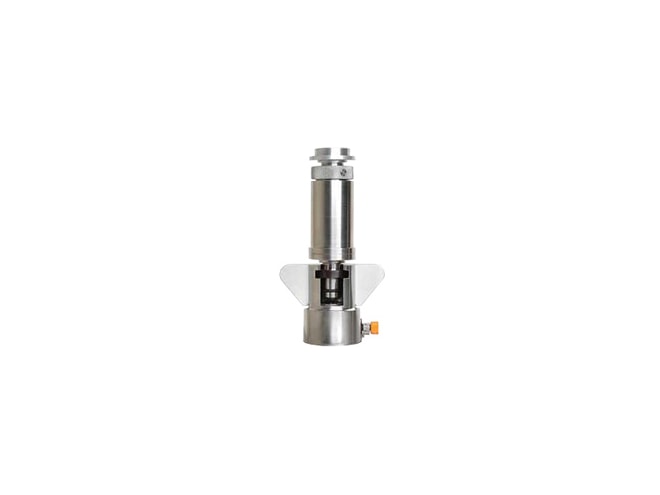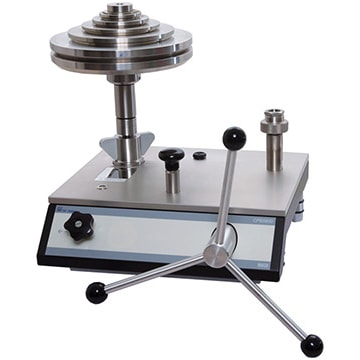
DH-Budenberg CPS5800 Piston Cylinder System
Hydraulic piston cylinder system for DH-Budenberg CPB5800 deadweight testers.

Overview
Features
- High accuracy over a wide measuring range
- Available in single or dual range system
- Up to 4000 psi (300 bar) with single
- Up to 20,000 psi (1,400 bar) with dual
- Standard gravity of 9.80665 m/s2
- Contact us for local gravity options
This product is an accessory for the following products:
Description
The DH-Budenberg CPS5800 piston-cylinder systems are available in two fundamentally different designs, depending on measuring range.
- Single-range piston-cylinder system for measuring ranges 1600 psi(120 bar) and 4000 psi (300 bar)
- Dual-range piston-cylinder system for measuring ranges 10,000 psi (700 bar), 16,000 psi (1,200 bar) and 20,000 psi (1,400 bar)
The dual-range piston-cylinder system offers two measuring ranges in one housing with automatic switching from low-pressure to high-pressure pistons. This provides an extremely flexible measuring instrument covering a wide range at high accuracy, using one piston-cylinder and one set of weights. Additionally, two test points can automatically be achieved with one set of masses.
The CPS5800 piston and cylinder are manufactured from hardened steel and tungsten carbide, respectively. Together these materials have a low coefficient of expansion with respect to pressure and temperature. This results in a very good linearity for the cross-sectional area and a very high accuracy.
The piston and cylinder are protected against contact, impacts or contamination from outside, in a solid stainless steel / hardened tool steel housing. Integrated overpressure protection prevents the piston from being forced out vertically, avoiding damage to the piston-cylinder system in the event of mass removal under pressure.
The masses are stacked directly onto the piston-cylinder shaft. This makes it easier for the operator to place the masses and enables a lower initial pressure value.
The overall design of the piston-cylinder unit and the precise tolerances of both the piston and the cylinder, ensure exceptionally low friction force, which results in excellent operating characteristics with long free-rotation time and low sink rates. Thus, a high long-term stability is ensured. The recommended recalibration interval is 5 years depending on the conditions of usage.
Need Help? Call a Calibration engineer at 1-800-884-4967
We're open Mo-Th 8am to 5:30pm. Fr 8am to 5pm ET









